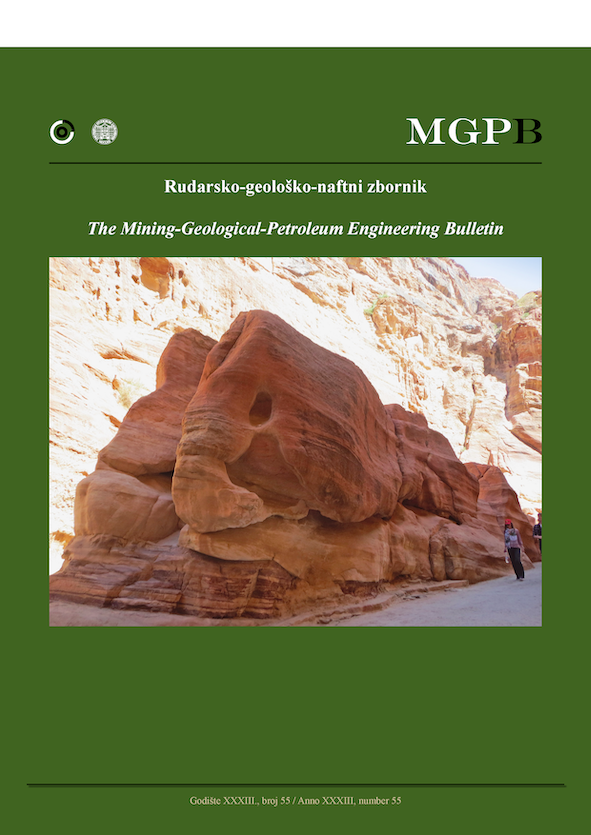Discrete Fracture Network (DFN) Modelling of Fractured Reservoir Based on Geomechanical Restoration, a Case Study in the South of Iran
DOI:
https://doi.org/10.17794/rgn.2021.4.12Keywords:
geomechanical restoration, discrete fracture network (DFN), finite element method (FEM), fractured reservoirAbstract
Fractured reservoirs have always been of interest to many researchers because of their complexities and importance in the oil industry. The purpose of the current study is to model the fractured reservoir based on geomechanical restoration. Our target is the Arab Formation reservoir which is composed of seven limestone and dolomite layers, separated by thin anhydrite evaporate rock. First of all, in addition to the intensity, the dip, and the azimuth of the fractures, the magnitude and the direction of the stresses are determined using wireline data e.g. photoelectric absorption factor (PEF), sonic density, neutron porosity, a dipole shear sonic imager (DSI), a formation micro imager (FMI), and a modular formation dynamics tester (MDT). Then, the seismic data are interpreted and the appropriate seismic attributes are selected. One of our extracted attributes was the ant tracking attribute which is used for identifying large-scale fractures. Using this data, fractures and faults can be identified in the areas away from wells in different scales. Subsequently, the initial model of the reservoir is reconstructed. After that, the stress field and the distribution of fractures are obtained using the relationship between the stresses, the strains, and the elastic properties of the existing rocks. The model is finely approved using the azimuth and the intensity of fractures in the test well. Our findings showed that the discrete fracture network (DFN) model using geomechanical restoration was positively correlated with real reservoir conditions. Also, the spatial distribution of fractures was improved in comparison to the deterministic-stochastic DFN.
Downloads
Published
How to Cite
Issue
Section
License
Copyright (c) 2021 authors and journal

This work is licensed under a Creative Commons Attribution 4.0 International License.
Creative Commons-BY
Authors who publish with this journal agree to the following terms:
In agreeing this form, you certify that:
- You read the ethical codex of the RGN zbornik available at journal web.
- You submitted work is your original work, and has not previously been published and does not include any form of plagiarism.
- You own copyright in the submitted work, and are therefore permitted to assign the licence to publish to RGN zbornik.
- Your submitted work contains no violation of any existing copyright or other third party right or any material of an obscene, libellous or otherwise unlawful nature.
- You have obtained permission for and acknowledged the source of any illustrations, diagrams or other material included in the work of which you are not the copyright owner.
- You have taken due care to ensure the accuracy of the work, and that, to the best of your knowledge, there are no false statements made within it.
- All co-authors of this submitted work are aware of, and in agreement with, the terms of this licence and that the submitted manuscript has been approved by these authors.
Publication licence
You retain copyright in your submitted work, according to journal license policy (CC-BY). By signing this form you agree that RGN zbornik may publish it under the publication licence. In summary the licence allows the following:
Anyone is free:
- To copy, distribute, display, and perform the work.
- To make derivative works.
Under the following conditions:
- The original author must always be given credit.
- The work may not be used for commercial purposes.
- If the work is altered, transformed, or built upon, the resulting work may only be distributed under a licence identical to this one.
Exceptions to the licence
In addition to publishing the work printed under the above licence, RGN zbornik will also enable the work to be visible online.
The journal editorial can change the licence rules anytime but it cannot retroactively restrict author(s) rights.


